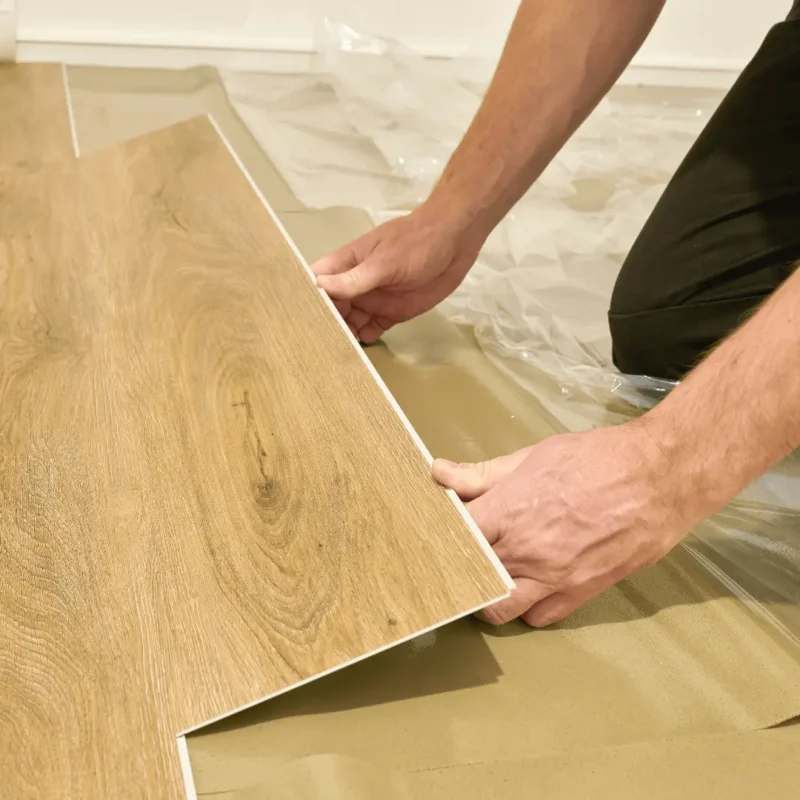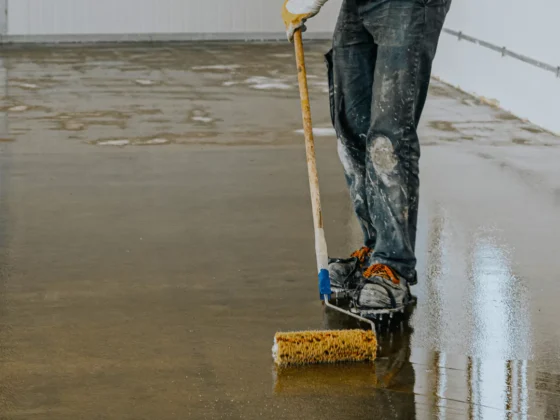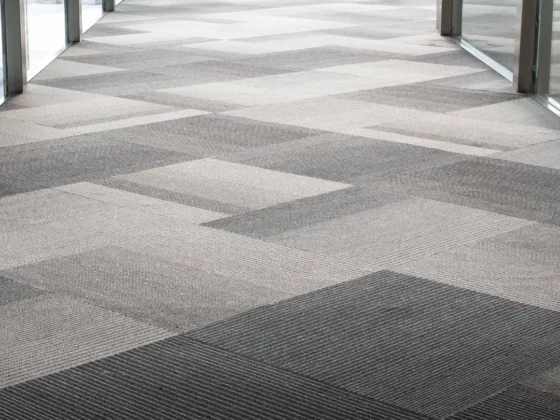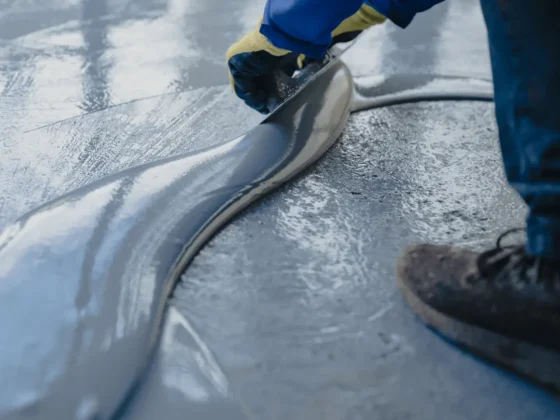When considering a new flooring option for your home or garage, you might come across the popular choice of click lock flooring. This type of flooring, known for its easy installation and versatility, can be a great solution for many areas in your home.
However, if you’re thinking about adding epoxy floor on top of it, there are several factors you should consider. Let’s discuss each of them in the following sections.
Understanding Click Lock Flooring
Click lock flooring is a type of floating floor system that doesn’t require nails or glue. Each plank locks into place with adjacent planks, creating a stable surface. It’s commonly used for laminate, vinyl, and engineered wood flooring.
Its popularity stems from the simplicity of installation and the ability to mimic more expensive flooring types at a fraction of the cost.
Benefits of Epoxy Flooring for Your Property
Epoxy flooring is a durable, long-lasting flooring solution often used in commercial, industrial, and residential spaces.
It’s particularly favored for garage floor epoxy applications due to its resistance to chemicals, stains, and heavy wear. Epoxy flooring is made by combining resin and hardener, creating a rigid plastic material that adheres well to concrete surfaces.
It provides a high-gloss finish that can improve the appearance of any space. As a result, offering both aesthetic and functional benefits.
Can You Install Epoxy Flooring Over Click Lock Flooring?
Installing epoxy flooring over click lock flooring is generally not recommended. Here’s why:
Surface Stability
Click lock flooring is a floating floor system, meaning it is not adhered to the subfloor. This can result in slight movements over time, especially under heavy traffic or fluctuating temperatures.
Epoxy requires a stable, non-moving surface to adhere properly. Any movement beneath the epoxy can cause cracks or delamination.
Adhesion Issues
Epoxy bonds best to porous surfaces like concrete. Click lock flooring, especially if it’s laminate or vinyl, is typically non-porous and can prevent proper adhesion of the epoxy. This can lead to peeling and lifting of the epoxy coating over time.
Moisture Concerns
Moisture trapped between the click lock flooring and the epoxy layer can lead to significant problems, including mold growth and further adhesion issues. Epoxy is impermeable, which means any moisture that seeps in will remain trapped.
Best Practices for Epoxy Floor Installation
To ensure a successful epoxy floor installation in Charleston, it is essential to start with a suitable subfloor. Here are the recommended steps:
Remove the Click Lock Flooring
Before applying epoxy, remove the click lock flooring to expose the concrete subfloor. This will provide the stable, porous surface that epoxy needs for a strong bond.
Prepare the Concrete
The concrete surface must be clean, dry, and free of any contaminants. This may involve grinding or shot blasting to remove any existing coatings and to create a profile for the epoxy to adhere to.
Repair Any Damage
Any cracks or holes in the concrete should be repaired before applying the epoxy. This ensures a smooth, even surface and prevents future issues.
Apply the Epoxy
Follow the manufacturer’s instructions for mixing and applying the epoxy. This usually involves a primer coat, followed by the main epoxy coat.
For added durability and aesthetic appeal, you can incorporate a flake epoxy floor finish. This involves broadcasting decorative flakes into the wet epoxy layer.
Advantages of Epoxy Flooring in Your Garage
Epoxy flooring offers several benefits that make it an excellent choice for garages:
- Durability: Epoxy is highly resistant to impacts, chemicals, and abrasions, making it perfect for garage environments.
- Easy Maintenance: The seamless surface of epoxy flooring is easy to clean and maintain. Spills and stains can be wiped away effortlessly.
- Aesthetic Appeal: Epoxy flooring comes in a variety of colors and finishes, including the popular flake floor epoxy option, which adds texture and visual interest.
Conclusion
While click lock flooring is a versatile and cost-effective option for many areas in your home, it is not the best substrate for epoxy floors. To achieve the durability and aesthetic benefits of epoxy, it is crucial to start with a stable and properly prepared concrete subfloor.
By following best practices, you can enjoy a beautiful, long-lasting garage floor epoxy that enhances the functionality and appearance of your space.





